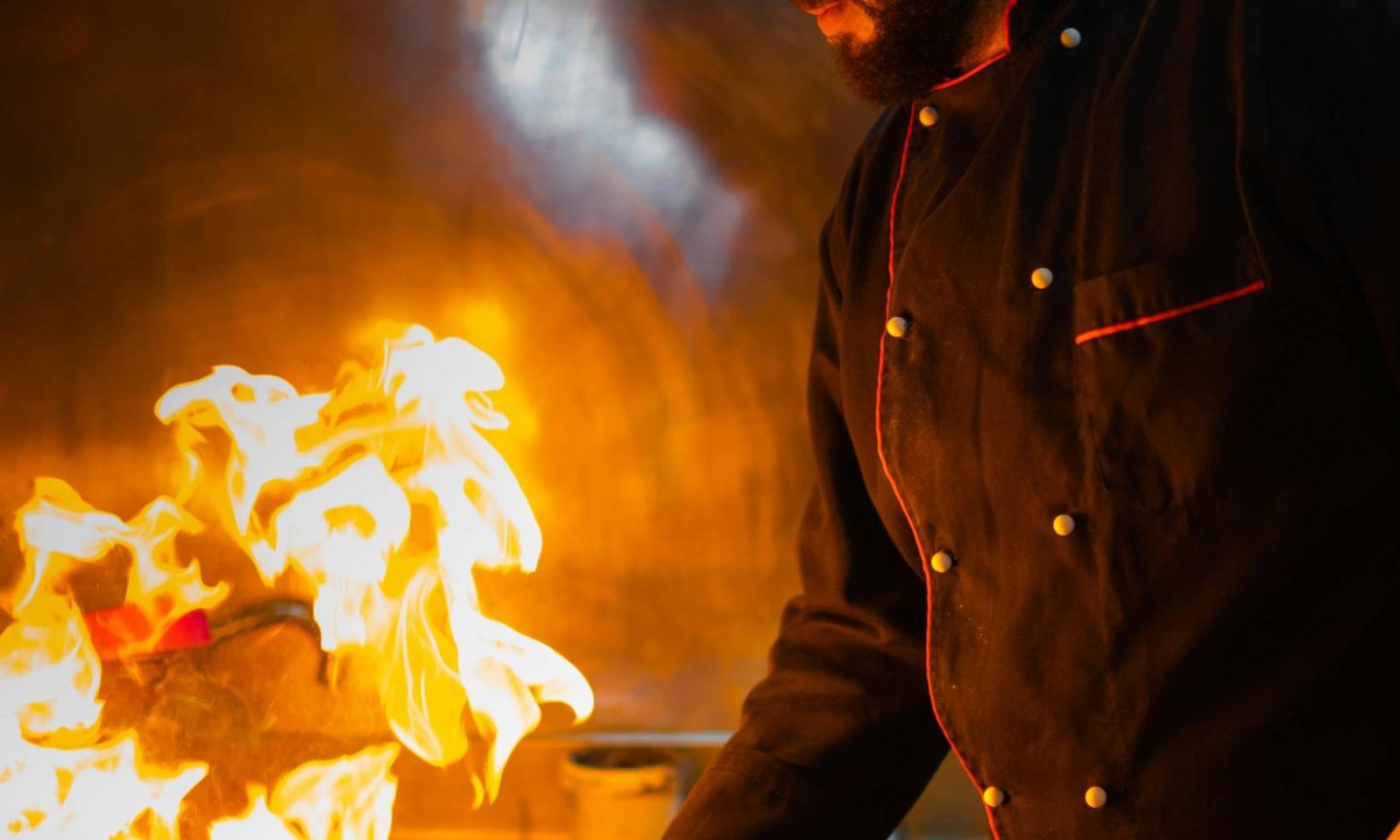
The Beginner’s Guide To French Cooking Terminology
With its long-standing roots in food culture, rich historical influence, and mastery of cooking techniques, it’s no wonder France is considered the culinary capital of the world. From haute cuisine to everyday cooking, French food has set the global standard.
However, this very standard, while inspiring, can also seem daunting to newcomers—particularly due to its specialised culinary language. Understanding this language, though, is key to navigating recipes and techniques confidently. That’s where our beginner’s guide comes in.
Join us as we break down the basics, helping you speak like a French chef in no time. Allons-y!
Why Are Most Cooking Terms French?
France has historically dominated the culinary arts, particularly in Europe, leading to the widespread adoption of French cooking terms. Following the French Revolution, displaced chefs further distributed this knowledge, simplifying recipes and solidifying the French culinary vocabulary.
This led to the early publication of cookbooks, some as early as the 1700s, by legends like Auguste Escoffier and Paul Bocuse, whose techniques and kitchen systems still shape modern kitchens today.
Essential French Cooking Terms
Ready to slice and dice your way through your Francophile culinary journey? We’ve compiled a handy glossary of essential French cooking techniques and terms, complete with definitions, pronunciations, and a glimpse into what each adds to a dish.
Bouillon
Pronounced: boo+yon
Bouillon is a concentrated stock made by simmering herbs, spices, vegetables, and animal products for hours. Common variations include vegetable, beef, chicken, and fish. It’s then used to enrich the flavour profiles of numerous dishes, particularly as a base for mother sauces.
Bouillon comes in different forms, ranging in convenience and price:
- Cubes
- Granules/powders
- Bases
- Concentrates
Consider adding some bouillon if you find your dish missing that certain something. You won’t regret it!
Bouquet Garni
Pronounced: boo+kay gar+knee
This little bundle packs a big punch! Bouquet garni is added while you’re cooking food to increase the flavour of a dish. To make it, fresh herbs and vegetables are tied with string or wrapped in muslin cloth. Some of the common ingredients include:
- Parsley stalks
- Bay leaves
- Thyme sprigs
- Celery stalks
Variations include rosemary, tarragon, basil, chervil, burnet, savory (part of the mint family), leek, peppercorns, and even a thin slice of pork fat. Add these bundles into stocks, sauces, soups, and stews and enjoy the true French flavours they produce!
Chiffonade
Pronounced: shiff+uh+nahd
Chiffonade is a French technique for slicing leafy herbs and vegetables into thin ribbons, which are used to flavour delicate foods.
Chiffonade is done in three easy steps:
- Stack each leaf on top of one another.
- Tightly roll this stack into a makeshift cigar.
- Start slicing your cigar into thin strips, and voila!
Sprinkle your beautiful ribbons onto salads, soups, sauces, pastas, and pizzas.
Coulis
Pronounced: coo+lee
Coulis is a pureè usually made from fruits and vegetables to accompany sweet and savoury dishes.
Common fruits used for coulis include:
- Raspberry
- Strawberry
- Mango
- Apricot
- Blueberry
For a vegetable coulis, consider these variations:
- Bell pepper
- Tomato
- Carrot
- Pumpkin
- Beetroot
Note: Coulis is not to be confused with compote. A compote refers to fruits or vegetables cooked for a long time without adding liquids.
Duxelles
Pronounced: duck+sell
Did you know that mushrooms are one of the top ingredients that create that unmistakable umami (savoury) flavour?
One of the most luxurious ways French cuisine achieves this is by finely dicing a medley of mushrooms and shallots and cooking them gently with aromatic herbs, like parsley and thyme, until a paste (called a duxelles) is formed.
If you’re feeling extra swanky, add a splash of sherry or dry Vermouth and finish with some cream!
Duxelles are an excellent way to enhance bases such as:
- Pastry fillings
- Stuffed vegetables
- Sauces and gravies
- Pâtés
Emulsion
Pronounced: ee+mul+shun
Emulsions are one of the first scientific techniques taught in culinary schools. They can be tricky at first, but once you’ve got the basics down, you won’t be able to stop making them.
An emulsion is a mixture of two liquids that wouldn’t usually mix, like oil and acid or lemon juice and vinegar. They can be hot or cold, sweet or savoury, smooth or textured, and are grouped into three categories:
- Temporary: These thicken when agitated (e.e. shaken) but separate again as they settle, like a simple vinaigrette.
- Semi-permanent: These keep their structure for a few hours before separating again, like hollandaise.
- Permanent: These maintain their structure for extended periods, like mayonnaise.
Consider making homemade mayonnaise for your next lunchtime sarmie or the perfect tangy hollandaise for your next eggs benedict!
Julienne
Pronounced: joo+lee+ehn
This French cooking term refers to vegetables that are usually peeled and cut into 5 cm by 3 mm strips.
These matchstick vegetable strips are then used in many vegetable dishes, salads and stir-fries, or as garnish. Their uniform and slender shape ensures they are evenly cooked and add beauty to the dish.
Liaison
Pronounced: lee+ay+son
Liaison is the process of thickening sauces during the cooking process using fat (like egg yolks or cream), starch (like flour or cornstarch), or pureèd vegetables. It’s the last step for finishing sauces and helps to create a velvety texture.
The most common method is adding heavy cream or egg yolks to a sauce and simmering it until it has thickened (with a risk of curdling if the heat is too high). However, the easiest method is to pour a cornstarch slurry into a simmering sauce on medium heat.
Mise en place
Pronounced: miz+ahn+plaes
Mise en place means ‘everything in its place’ and ensures all ingredients are prepped and ready before you start cooking. From chopping vegetables to measuring ingredients, this technique speeds up meal prep in restaurants.
Try it at home and enjoy a stress-free meal time!
Roux
Pronounced: ru
Roux is a mixture of equal parts flour and fat that is cooked over a low heat to form the base for various dishes. What’s particularly interesting is that its colour and flavour deepen the longer it cooks:
- Blonde roux for a mild taste
- Brown roux for richness
- Dark roux for deep, complex flavour
There are many beloved dishes that start off as a humble roux, including lasagne, potato soup, cheese souffle, and gumbo.
Sautè
Pronounced: saw+tei
This is another one of those first techniques taught at culinary schools. Sautèeing means quickly frying vegetables in a little butter or olive oil over a high heat while caramelising them to produce rich flavours.
Tournée
Pronounced: tour-nay
Tournée, meaning “turned”, is a preparation technique used to uniformly shape vegetables, typically with a tourné, bird’s beak or pairing knife. Root vegetables, like potatoes and carrots, are peeled and sliced into a rugby ball-like shape before cooking.
This takes some practice and a good eye, but it’s a great way to evenly cook vegetables, and it looks stunning on the plate!
Bon Appétit
French cuisine doesn’t start with the technique; it starts with its very own language. And once you’ve mastered the basics from mise en place to sautè, even aspiring chefs will be able to navigate recipes (and the kitchen!) with ease.
Ready to start cooking some French dishes? Explore our range of French foods and check out our blog for recipes and expert tips.
